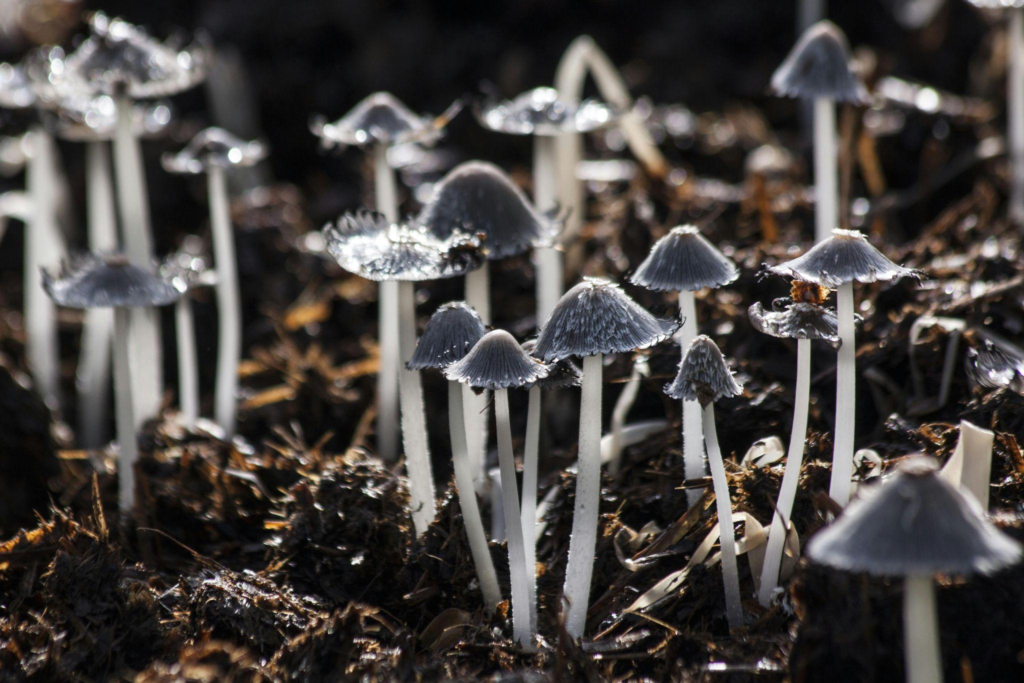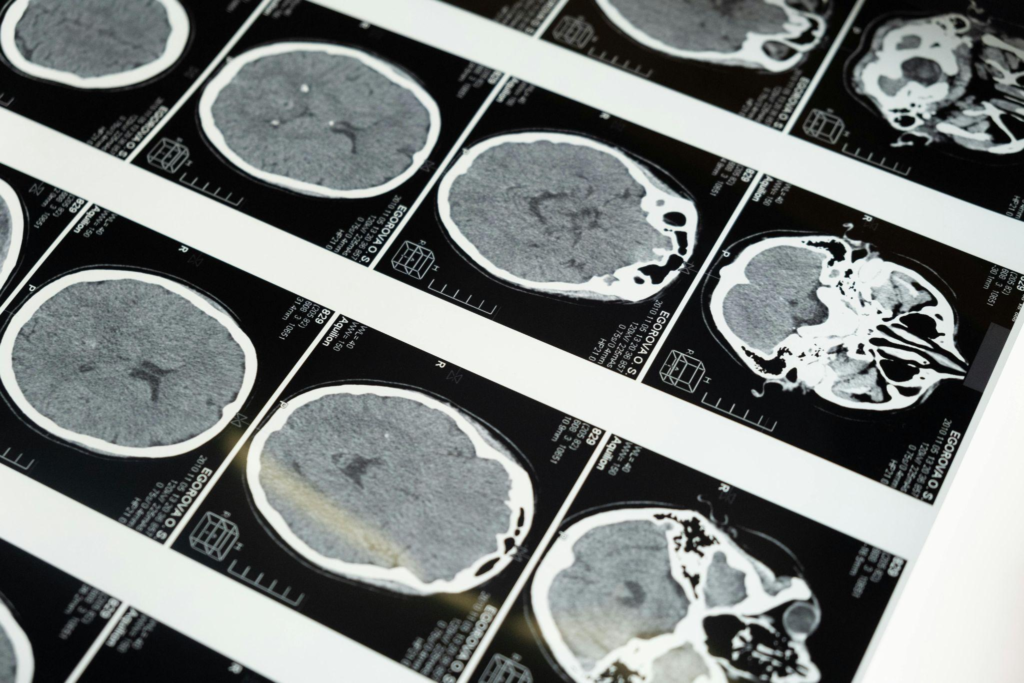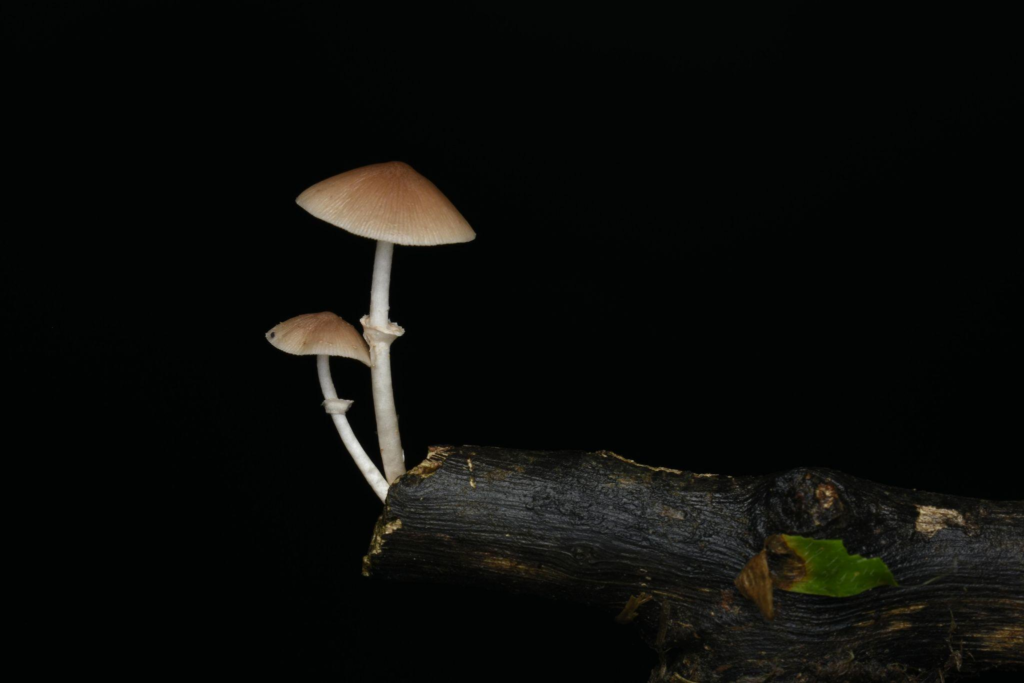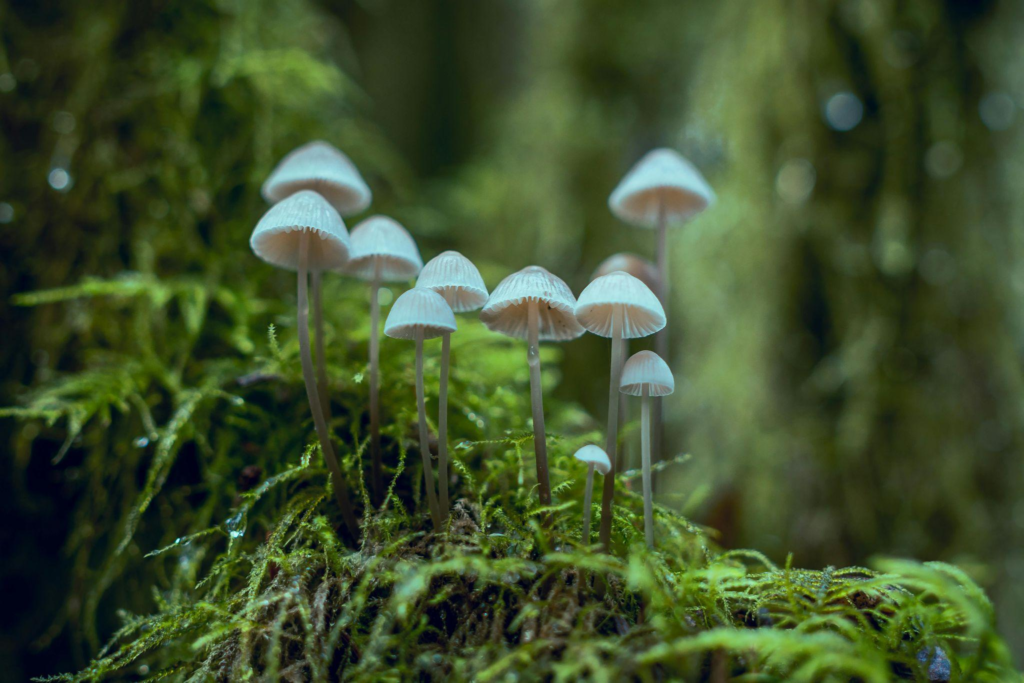
Microdose psilocybin refers to the ingestion of sub-perceptual portions of “magic mushrooms.” This practice has gained popularity due to widespread reports of its benefits.
The psychedelic landscape has captured the imagination of physicians and patients. Studies display massive potential for psychiatric applications. The lack of double-blind studies compromises our understanding of this fascinating compound.
Learn about microdosing psilocybin, the science, and the benefits. We explain dose and safety considerations and how to combine them with a wellness regime. Read on to explore the therapeutic potential of this popular new practice.
Let’s define a few terms to understand what microdosing is, and what psilocybin can do.
Microdosing is the repeated action of taking small quantities of a psychoactive substance. Low doses reportedly ease daily functioning without the psychedelic side effects.
Proponents take up to three mini doses per week. Each is about one-tenth of a regular recreational portion.
Various societies consume psilocybin mushrooms in traditional or spiritual settings. They also use them for healing.
We now know psilocybin is a psychoplastogen that can promote swift, sustained neuroplasticity. It occurs naturally in Psilocybe genus mushrooms like the Matias Romero strain.
Psilocybin breaks down into psilocin, its active metabolite. Both are 5-HT serotonin receptor agonists and the main hallucinogenic compounds.
Medical professionals may advise certain people to avoid psychedelics, including those with:
Microdose psilocybin protocols are important, especially dosage and timing.
Consider tracking the process in a journal. Note food and drinks, specific reactions, and any side effects.
The Fadiman protocol breaks down the process to improve safety and control. Dr. James Fadiman is a famed writer and leading expert in psychedelic therapy. His protocol aims to present a risk-free experience that magnifies wellbeing.
Most protocols recommend a schedule of one day on and two days off. This restricts tolerance and could reduce effectiveness. Dr. Fadiman insists it’s safe to microdose every day without consistent breaks and believes it enhances general cognition.
He suggests weekends off if you want to improve your business or professional life. Microdose psilocybin every other day to manage depression, PTSD, or anxiety.
Psilocybin is federally illegal in the US. However, several states and local jurisdictions have made moves to decriminalize or legalize it, especially for medical use. Experts expect more regions to follow suit soon.
Psychedelic-assisted therapy regulations will ensure safety. Physicians need to know the legal aspects as well as evidence and side effects. They must also practice within their scope of competence.
Doctors must provide legal avenues for accessing psychedelics. They shouldn’t suggest hallucinogens that haven’t received approval.
Clinical trials are still exploring the effects of psilocybin. Science shows there’s some truth to the claims.

Psychedelic substances are in a class called hallucinogens. They can distort your sense of reality and affect your perception of time. They may also alter your sense of smell, taste, sight, or sound.
Psychedelics include:
Microdosing involves taking small portions of a psychedelic substance. The dose is a fraction of the amount required to cause hallucinations or “tripping.” It presents physiological reactions without side effects.
There are anecdotal claims of improved mood, concentration, and cognitive function. Others assert enhanced problem-solving and creativity. Academics contend it’s safe and improves symptoms in some psychiatric illnesses.
There isn’t an established definition for microdose measurements for all psychedelics. Some approximate it’s about one-fifth to one-twentieth of a regular recreational dose.
For psilocybin mushrooms, a recreational dose is 2–3 grams, while a microdose is 0.1–0.3 grams. The potency of fungi can vary, and they’re not regulated or tested apart from clinical trials. It’s difficult to find consistency in quality and effect.
Serotonin receptors exist on neurons of the central or peripheral nervous system. Also called 5-HT receptors, they’re vital to almost all brain function regulation that facilitates learning and memory. They also regulate sleep, hunger, body temperature, and sexual desire.
Serotonin is the body’s feel-good hormone and a neurotransmitter. It affects mood and happiness, carrying messages around the body. People with depression or anxiety often have low serotonin levels, but psychedelics could help.
The main psychedelic component of “magic” mushrooms is psilocybin. It stimulates serotonin 2A receptors and can induce or increase neuroplasticity.
Neuroplasticity is the nervous system’s ability to change connections, networks, and behavior. These changes are responses to:
Networks evolve through growth or reorganization. The changes range from individual neural connections to systemic adjustments, like cortical remapping. Psilocybin may boost neuron branching and increase synapses.
Clinical trials have shown potential therapeutic uses. They point to the treatment of depression, addiction, and end-of-life issues.
Most studies have size or procedural limitations. There’s extensive literature, and many assert medical applications. More double-blind studies are required.
One trial tested microdosing psychedelics for depression. It showed subtle positive effects on cognitive processes. Researchers think these low doses might induce cognitive flexibility that interrupts obsessive thinking.
Another study considered the therapeutic potential of psilocybin. It concluded psychedelic therapies may have enormous potential in psychiatric medicine.
Another found rapid and sustained antidepressant effects in people with major depressive disorder. They learned that psilocybin with psychotherapy helped depressed cancer patients.
It also picked up patients with treatment-resistant depression. An estimated 20–60% of psychiatric patients show treatment resistance. They don’t respond to standard therapies, and psychedelics may offer alternatives.
Many trials showed statistically significant benefits with fewer side effects. The authors also noted the ineffectiveness of current therapeutic alternatives.

Microdosing may offer benefits, but further research is vital. It’s important to understand the mental health positives these doses could offer.
Research shows psilocybin could be an alternative treatment for depression. It may help treat mental or behavioral problems.
Mushrooms may provide hope for those with treatment-resistant depression. They could also be useful in treating various psychiatric issues and neurodegenerative diseases like Parkinson’s or Alzheimer’s.
Some studies show it eases symptoms of obsessive-compulsive disorder (OCD) and clinical depression. It may provide an option for social phobias and post-traumatic stress disorder (PTSD).
Psilocybin is said to be effective at reducing fear and anxiety in terminal cancer patients. Typical therapies for depression and anxiety are antidepressants or benzodiazepines. Evidence indicates low efficacy and potential side effects.
Microdosing participants outperformed non-dosing peers. They showed significant elevation of mood, mental health, and psychomotor ability. Some reports claim it manages alcohol and smoking dependence.
Some trials document psilocybin’s apparent analgesic effects. Reports claim it may provide relief from painful cluster headaches.
There remains a significant stigma to hallucinogens. Ironically, modern microdosers feel it pushes a healthier lifestyle.
Numerous anecdotes link magic mushrooms to a creative boost. Several artists claim improved concentration and extended performance. The Beatles, the Grateful Dead, and Janis Joplin reportedly used psychedelics for creative impetus.
A 2018 trial found that microdosing truffles unlocks creative problem-solving abilities. It stimulates mental flexibility and improves brain function. They also noted it allows people to think outside the box.
Another study found evidence tying psilocybin to enhanced creative cognition during and after use. Microdosing directs focus and lifts concentration. It enhances performance and increases productivity.
Some Silicon Valley professionals reckon low doses are performance-enhancing. They claim it boosts focus, energy, and alertness.
Many report spiritual or mystical insights with microdose psilocybin. A full recreational dose offers psychedelic reactions. Microdosing may balance emotional responses, allowing better regulation.
One trial used Ritalin as an active control. Experts say it’s the most rigorous study of the potential for spiritual episodes. A third of participants claimed it was their single most spiritually significant experience.
The mystical experience is what draws many to psilocybin. One trial linked the intensity of the psychedelic experience to lasting positive psychological effects.
Much anecdotal evidence asserts improved wellbeing from microdosing psilocybin. It’s mostly subjective, with minimal empirical data.
One meta-analysis collated the results of numerous trials and researched microdosing benefits. More than a quarter of respondents reported an improved mood. Many noted increased focus and creativity. It also boosted self-efficacy and energy.
Social and cognitive benefits and physiological enhancement improve wellbeing. Most insist it improves the quality of life.
Microdosing generally involves consuming a fractional portion of a substance. There’s no regulation or definition of a microdose, but most measure 5–20% of a regular dose.
A regular psilocybin dose is 2–3 grams. A microdose translates to 0.1–0.3 grams of dried mushroom. Most choose about 0.3 grams and repeat 3–5 times per week.
Use an accurate scale to weigh your dose. Psilocybin content in mushrooms can vary, so consistency is tricky.

Potential risks and precautions
Microdose psilocybin is generally safe. Taken alone, magic mushrooms have the lowest risk profile of any recreational drugs. Mild physical symptoms, like headaches, gastrointestinal issues, and nausea, are possible. Regular ingestion of psilocybin may increase tolerance.
Problems occur when people consume large doses, causing the dreaded “bad trip.” Ensure you get your psilocybin from a trusted source, as some species are poisonous.
Many psychiatric medicines interact with psilocybin. Currently, standard care involves selective serotonin reuptake inhibitors like Zoloft and Prozac. They also increase serotonin levels in the brain, raising the possibility of cross-tolerance.
Antipsychotics, anxiolytics, mood stabilizers, and antidepressants are common psychiatric drugs that may interact with psilocybin. Mixing psilocybin with stimulants can elevate blood pressure and heart rate.
“Set” and “setting” are enormously important when consuming psychedelic drugs.
“Set” is a contraction of “mindset” and means your mental state. It relates to the expectations you bring to the experience. The “setting” is the physical and social environment. Monitor the effects and adjust dosage accordingly.
Many people include microdose psilocybin in their wellness regimes.
Responsible microdosing is typically safe and effective. Get the best experience with the following tips:
Microdosing involves repeated ingestion of small doses. These portions aren’t enough to impair normal cognitive functioning.
How you incorporate microdosing depends on your desired effects. Microdose daily for general cognitive and mood improvement. Elevate professional focus and performance by abstaining on weekends. Dose every other day to manage anxiety, PTSD, and depression.
Research suggests there’s a synergy between microdose psilocybin, mindfulness, and meditation. It increases empathy and wellbeing while reducing personal focus. Mindfulness training may amplify the potential of psychedelic drugs.
Speak to a healthcare professional if you need guidance. Educate yourself to ensure the safest experience.
Investigation into the therapeutic potential of microdosing is in its infancy. More trials are needed, but the prospects look good.
Clinical trials are testing the efficacy of microdosing for several conditions. They include addiction, bipolar disorder, and major depressive disorder. It might also help migraines, cluster headaches, OCD, and anorexia nervosa.
Researchers are investigating the placebo effect. Previous studies suggest it may outweigh the pharmacological action.
Another recent study explored the expectancy effect. It used a double-blind randomized trial to test the effects. They concluded expectations propped up benefits.
Microdose psilocybin offers several potential applications. Multiple studies show it helps treat clinical depression. It may also help people with treatment-resistant depression and end-of-life anxieties.
Psilocybin could also aid in kicking nicotine or alcohol dependence. It may provide a respite from painful migraines or cluster headaches.

Psilocybin is federally illegal, raising ethical concerns in regions that haven’t upgraded their laws. Restricting access to psilocybin may cause harm, and education is necessary to upgrade outdated beliefs. The treatments may present a paradigm shift in mental health care.
New research has reignited interest in understanding magic mushrooms. Microdose psilocybin shows enormous promise for mental health conditions.
About Good Moods
Important Pages
Good Moods Inc. | 70 SW Century Dr Bend, Oregon 97702 Sitemap Blogs